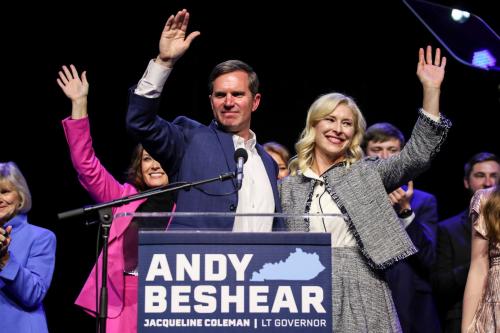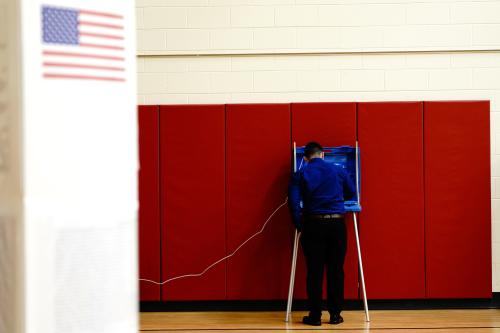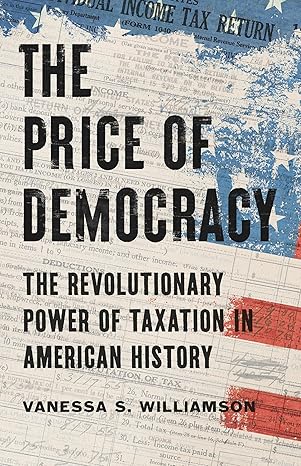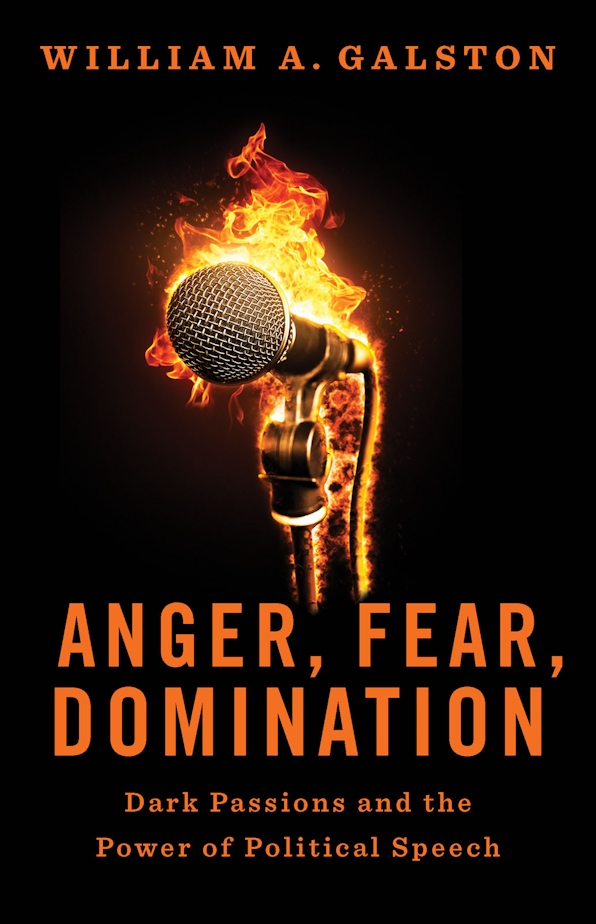This piece was originally published in Democracy: A Journal of Ideas as a part of the series, “Election 2020: What Comes Next?“
Less than 36 hours after the polls closed, Democrats had formed up into their traditional circular firing squad—and this time, after they won the presidency! But Joe Biden’s margin over Donald Trump was a fraction of what they had expected. The Senate seemed likely to remain in Republican hands. House Democratic leaders had to explain why the gains they expected had turned into significant losses. And despite well-organized efforts, Democrats had failed to flip a single state legislature, allowing Republicans to dominate the redistricting process as they did a decade ago.
Why? Who was to blame? Moderates charged that socialism and “defund the police” had weighed down Democratic candidates in swing districts. Progressives returned fire, arguing that moderates were trying to suppress the new voices in the party that had energized its base of minorities and young people. In a post-election interview, Representative Alexandria Ocasio-Cortez critiqued centrists’ campaign strategies and pointed to “the share of white support for Trump” as her biggest surprise and suggested that racism accounted for much of Democrats’ disappointing results.
Throughout 2020, Democrats have demanded—rightly—that the fight against the pandemic be evidence-based. They should apply the same standard to their inevitable election post-mortem. When they do, they will realize that their disappointment reflects the structural features of contemporary politics more than poor choices by strategists and candidates.
Let’s begin with two facts. Donald Trump enjoyed—and used—the substantial powers of incumbency to boost his reelection chances—nowhere more aggressively than in Florida. There is nothing unusual about this—it’s one of many reasons why challengers rarely defeat sitting presidents. Whatever the final margin turns out to be, Joe Biden deserves credit for getting the job done.
Second, an uncomfortable truth: Donald Trump’s presidency was no fluke. He crystalized and intensified the passions that propelled him to the presidency in 2016; he did not create them, and they have not gone away. He will probably end up with a higher share of the popular vote in defeat than he received in victory four years ago. Trumpism will loom as a massive outcropping in our political landscape for quite some time, and healing the divisions that fuel it will require a less ideological analysis (and self-examination) than Democrats have mustered during the past four years. Biden deserves credit for unifying nearly all the Americans who did not want Donald Trump to be President, a feat Hillary Clinton was unable to accomplish in 2016.
Despite repeated warnings that the votes reported on Tuesday night and Wednesday morning would be Trump-heavy and that the “blue shift” would take place days later, Democrats reacted myopically to the early returns. The U.S. Elections Project has estimated that votes will reach a total of 158.8 million, compared to 136.7 million four years ago. If so, it was apparent that after Election Night, 8 million votes remained to be counted, the bulk of them from deep blue states. After these votes are all finally tallied, Joe Biden will likely enjoy a popular vote advantage of at least 6 million—and a winning margin of 4 percentage points or more. He moved five states—Wisconsin, Michigan, Pennsylvania, Georgia, and Arizona—from the Republican to the Democratic column. By the standards of the close races that have characterized our politics since Ronald Reagan left the scene, this is a substantial victory, not a cause for disappointment, and it came with the highest turnout as a share of the population eligible to vote in more than a century.
As partisan polarization has deepened in recent decades, ticket splitting has waned. (A pre-election survey by the Pew Research Center estimated that only 4 percent of the electorate was likely to do so this year.) If so, the outcome of Senate races would be predicted to conform increasingly to each state’s presidential vote.
This is exactly what has happened. In 2016, for the first time since the 17th Amendment inaugurated the selection of senators by popular vote, not a single Senate race deviated from the presidential race. In 2020, only Susan Collins—a sui generis candidate in a sui generis state—was able to buck the tide. In Colorado, Biden won big, and so did John Hickenlooper. Biden won Arizona and Michigan by modest margins; so did Mark Kelly and Gary Peters. In Texas, Montana, and Iowa, all of which Biden lost by substantial margins, Democrat Senate candidates could muster no more than 45 percent of the vote. Biden lost North Carolina by 1.3 percent; the Democrats’ senate candidate, Cal Cunningham, by 1.7 percent. And in Georgia, where Biden and Trump are separated by only 14,000 votes out of nearly 5 million cast, both Senate races are headed to runoffs.
The bottom line: In contemporary circumstances, Democrats will have a hard time winning Senate races in Republican states during presidential election years. This has little to do with money, message, strategy, or even candidates—and nearly everything to do with the intense partisan polarization that has made widespread ticket-splitting a thing of the past. Yes, Steve Bullock—the popular Democratic governor of Montana—ran 5 points ahead of Joe Biden. But in a state Biden lost by 18 points, it wasn’t nearly enough.
Now to the House of Representatives. In 2018, Democrats won 53.4 percent of the votes cast in House races and gained 41 seats, with the highest turnout in a midterm election for more than a century. Although turnout rose across party lines, voter mobilization was massively asymmetrical. Compared to the previous midterm in 2014, Democrats raised their vote from 35.6 million to 60.6 million, a stunning gain of 25 million. By contrast, Republicans were able to increase their total by only 10 million votes.
During presidential election years, total votes cast in House races also tend to mirror the presidential vote. So it proved in 2016, and although the total vote for House races this year has yet to be tallied, there can be no doubt that the Democratic advantage over Republicans narrowed substantially from its 2018 peak, in line with a Biden victory margin of at least 3 points lower than the edge House Democrats enjoyed two years ago. Against this backdrop, a narrowed House majority was inevitable. So long as partisanship remains pervasive and intense, House results are likely to vary in line with the presidential outcome in years divisible by four, with massive “wave” elections mostly confined to the midterms.
And finally, the presidential contest, where a clear-eyed assessment of the results contradicts many confident predictions. This was supposed to be the “year of the woman,” whose revolt against Donald Trump’s aggressive and disrespectful brand of masculinity was predicted to trigger a massive surge in favor of the Democrats. This did not happen. Compared to 2016, Biden gained only marginally (if at all) among women. Among men, however, he improved on Hillary Clinton’s performance by 5 to 7 points.
The predicted outpouring of minority votes did not happen either. Although African Americans voted in greater numbers than four years ago, their share of the electorate was unchanged, and Biden received a slightly lower share of their vote than Hillary Clinton did. Early figures suggest that Trump improved on his 2016 showing among Black men and younger Black voters for whom the civil rights movement and the Great Society are history lessons rather than lived experience.
Latinos have equaled or surpassed Blacks as the largest minority group in the electorate, an advantage that is bound to widen in subsequent elections as more Latinos come of voting age. Despite justified concern about Biden’s performance among Latinos in Florida and Texas, he appears to have won roughly the same share of their vote as Hillary Clinton did.
Still, the warning light is flashing yellow. “Latino” is a census category, not a group unified by a shared experience. Some have been here for generations; others have just arrived. Their country of origin influences their response to the political options they face in their adopted country. For a Spanish-speaker from Cuba, Venezuela, Nicaragua, and Colombia, socialism is toxic—a sentiment that Trump successfully exploited in Florida, where he received 47 percent of the Latino vote. He also bettered his national showing with this group in Georgia (41 percent), Texas (40 percent), Nevada (37 percent), and Arizona (36 percent). Contrast these results with his showing in California (21 percent) and New York (27 percent), where more Latinos come from Mexico and Puerto Rico.
Democrats who view the Latino vote through a bicoastal Blue prism are likely to be led astray, as are those who draw facile analogies between Latinos and African Americans. Latinos may prove to be the Italians of the twenty-first century—a family-oriented, culturally conservative, and entrepreneurial group that gradually assimilates into the general population as the generations pass and discrimination fades.
Despite Representative Ocasio-Cortez’s lament about white Americans, Biden scored substantial gains in this group, which still represents at least two-thirds of the electorate, according to the exit polls as well as other sources that many experts believe are more reliable. In fact, his showing among whites explains all his gains over Hillary Clinton in the national vote share; his showing among Black and Latino voters was at best the same as hers, if not a bit worse. He even scored important gains in the heart of the Trump coalition—whites without college degrees.
Young adults and first-time voters gave Biden a slightly higher share of their vote than Hillary Clinton received four years ago, but to the dismay of progressives, their share of the electorate did not increase. (Senator Bernie Sanders encountered similar disappointments during his quest for the presidential nomination.) By contrast, Biden was able to slash Trump’s margin among seniors, a bloc with a high propensity to vote, by more than half, and he substantially bettered Hillary Clinton’s showing among moderate and independent voters
As for geography, in-depth studies of the election returns by The New York Times and The Wall Street Journal show that Biden did much better than Hillary Clinton among suburban voters, who make up about half the electorate. The Times found that in the 373 suburban counties across the country, Biden improved on Clinton’s performance by about 4.6 percentage points. In Georgia, the pro-Biden shift was a massive 8 points, compared to 3 points for Michigan and Wisconsin.
As the Journal study underscored, there are different kinds suburbs with distinctive voting patterns. The inner suburbs, which tend to be wealthier and more diverse, lean Democratic, and Biden improved Democrats’ winning margin by about 3 points over Hillary Clinton. In the outer suburbs (“exurbs”), which tend to vote Republican, Biden cut Trump’s edge from 18 percent in 2016 to 12 percent this year. And in the Midwest, Trump’s margin in working-class suburbs declined slightly from four years ago.
In other kinds of jurisdictions, Trump improved further on his strong 2016 showing in rural areas and small towns, while Biden’s performance in Philadelphia, Detroit, and Milwaukee was not significantly better than Clinton’s. Biden’s improved performance in the suburbs surrounding these urban areas was the key to his victory in the Blue Wall states that put him over the top in the Electoral College. In Georgia and Arizona, on the other hand, both big cities and their adjacent suburbs contributed to Biden’s narrow wins.
In short, Biden’s strengths were exactly what his backers for the Democratic nomination predicted: He was able to hold Democrats’ gains among the so-called “Rising American Electorate” (women, young adults, urban voters, and minority groups) while substantially improving Democrats’ showing in those groups—men, whites , seniors, and suburbanites—that gave Trump his wafer-thin upset victory four years ago. Gains in these groups almost certainly turned 2016 Democratic losses in the Blue Wall states into vital victories this year and helped move Georgia and Arizona into the Democratic column for the first time in decades. There is good reason to wonder whether any other Democratic nominee could have achieved these results.
Democrats are rightly disappointed that President-elect Biden probably will not enjoy the unified support of the legislative branch. Barring Democratic victories in both Georgia Senate runoff elections, much of the progressive agenda will be on hold. If Biden is unable to achieve a working relationship with Senate Majority Leader Mitch McConnell, prospects are dim for major legislative accomplishments in the next two years. If McConnell gives priority to the nakedly political objectives that guided him in the first two years of the Obama, Biden’s plea for national healing will go unheeded. For now, anyway, Americans of goodwill in both parties are reduced to hoping that the urgency of the problems Biden will face as he takes the oath of office will move McConnell in the direction of the compromises that are the only alternatives to continuing gridlock, which would inflict further damage on the nation’s health, economy, and social fabric.
Joe Biden defeated Donald Trump with a coalition that stretched from the center-right to the progressive left—that ran, as someone remarked, from William Kristol to AOC. To say the least, it will not be easy to unite this diverse assemblage behind a common program. For cultural as well as economic reasons, the issues that unite progressives leave moderate voters uneasy. Even if McConnell chooses the path of cooperation with the incoming President, the progressive agenda has no chance of getting enacted into law during the first two years of the new Administration.
Progressives face a strategic choice. They can put their agenda on hold, accept as necessary the bargains that Biden will be compelled to strike, and turn their energies toward putting Democrats firmly in control of the Senate after the 2020 mid-term elections. Alternatively, they can decide that fighting for their agenda will shift public opinion in their favor, even if they lose, and they will pressure the White House and the Democratic congressional leadership to offer bills that the Senate is bound to reject. The latter course would guarantee a continuation of the gridlock that has frustrated the American people by thwarting progress on so many vital issues, while the former would require committed advocates to display an unusual degree of foresight and restraint.
To manage this swirl of pressures from his left and his right, Joe Biden will need all the experience he has acquired and all the skills he has honed during nearly half a century in national public life. It won’t be easy, but this is the hand he has been dealt, and his only option is to play it as well as he can.
The Brookings Institution is committed to quality, independence, and impact.
We are supported by a diverse array of funders. In line with our values and policies, each Brookings publication represents the sole views of its author(s).











Commentary
Hold your fire, dueling Democrats
November 23, 2020